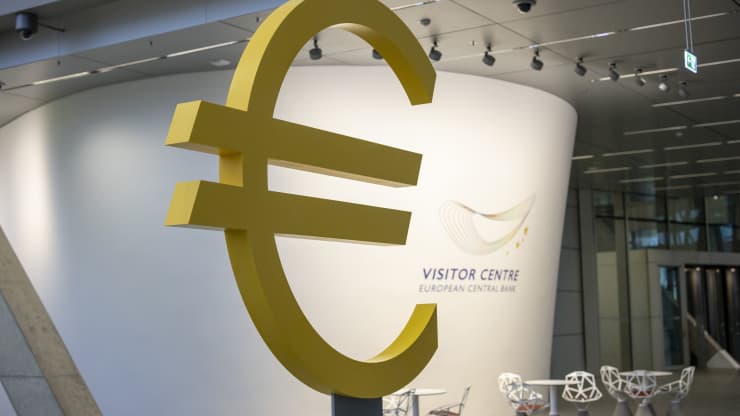
The euro fell to its lowest level in two decades on Tuesday as fears of a recession in the euro zone ramped up, with gas prices soaring and the Ukraine war showing no signs of abating.
The euro shed around 1.5% for the session to hit $1.0265 against the dollar, while the dollar index gained 1.29% to 106.49.
Euro zone inflation hit a record 8.6% in June, prompting the European Central Bank to give markets advance notice of its intention to hike interest rates for the first time in 11 years at its July meeting.
However, growing fears of a recession may limit the central bank’s capacity to tighten monetary policy. The July Sentix Economic Index on Monday showed investor morale across the 19-country euro zone has plunged to its lowest level since May 2020, pointing toward an “inevitable” recession.
Record-high inflation in Europe has been abetted by skyrocketing gas prices over recent months.
Natural gas prices in Europe on Monday extended their relentless rise, climbing to highs not seen since early March as planned strikes in Norway added to market woes about Russian supply cuts. The front-month gas price at the Dutch TTF hub, a European benchmark for natural gas trading, was last seen trading up 7.8% to hit 175.5 euros ($180.8) per megawatt-hour.
All of these factors have converged to hit the euro hard. The currency of the euro zone has lost over 9% of its value against the dollar since the start of the year.
The dollar’s strength continues, meanwhile, as risk-averse investors seek a safe haven, and the U.S. Federal Reserve embarks upon what looks to be an aggressive rate hike regime.
After raising benchmark interest rates by three-quarters of a percentage point in June, Fed Chair Reserve Chair Jerome Powell said the central bank could raise interest rates by a similar magnitude next month.
The euro also fell fractionally against sterling to trade at £0.8582 by mid-afternoon, and dropped by around 1.4% against the Japanese yen, itself near multi-decade lows against a resurgent dollar.























